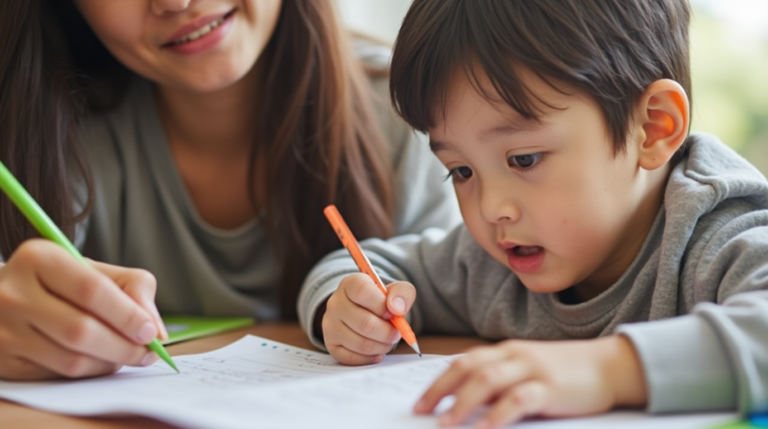How to Raise Confident and Independent Children: A Parent’s Guide
Table of Contents
How to Raise Confident and Independent Children
Confidence and independence are among the greatest gifts we can give our children. In a world that’s constantly changing, these traits help kids navigate challenges, make smart decisions, and believe in themselves.
This guide will walk you through practical strategies to nurture self-assured, capable children—while still providing the support they need.
1. Encourage Decision-Making from an Early Age
“The smallest choices build the biggest confidence.”
How to implement this:
✔ Let toddlers pick between two outfits.
✔ Allow school-age kids to choose their after-school snack.
✔ Involve teens in family decisions (e.g., vacation plans).
Why it works: Decision-making teaches responsibility and critical thinking.
2. Teach Problem-Solving, Don’t Always Rescue
Instead of fixing every problem, guide them with:
- “What do you think you could try?”
- “Let’s brainstorm solutions together.”
Example Table: Problem-Solving Scenarios
| Situation | Parent Response | Child Learns |
| Forgot homework | “How can you remember next time?” | Accountability |
| Toy breaks | “Can we fix it or repurpose it?” | Creativity |
3. Assign Age-Appropriate Responsibilities
Chores build competence:
- Ages 3-5: Put toys away, feed pets
- Ages 6-10: Make their bed, pack lunch
- Teens: Manage allowance, do laundry
Key takeaway: Responsibility fosters independence.
4. Praise Effort Over Results
“I love how hard you worked on that!” works better than “You’re so smart!”
Growth mindset phrases:
- “You practiced so much—it’s paying off!”
- “Mistakes help us learn. What did you discover?”
5. Let Them Take (Safe) Risks
Confidence grows through experience:
✔ Climb a tree (with supervision).
✔ Order their own food at restaurants.
✔ Try a new sport or hobby, even if they might fail.
“Overprotection teaches fear; guided freedom teaches courage.”
6. Model Confidence and Independence
Children copy what they see. Show them:
- How you handle stress calmly.
- How you solve problems creatively.
- When something feels too hard, try saying ‘Can you help me figure this out?
7. Encourage Social Independence
Build social confidence:
- Arrange playdates without hovering.
- Let them speak to teachers/store clerks.
- Support friendships without interference.
8. Normalize Mistakes as Learning Tools
“Failure is the tuition we pay for success.” — Brian Tracy
How to react when they mess up:
- “What happened?” (Neutral tone)
- “What could you do differently next time?”
- “I believe you’ll handle it better tomorrow.”
9. Foster Financial Independence Early
- Ages 5-8: Use a piggy bank for saving/spending.
- Ages 9-12: Pay them for extra chores (teach budgeting).
- Teens: Open a bank account, discuss part-time jobs.
10. Gradually Increase Freedom
Age-by-age independence boosts:
| Age Group | New Freedoms |
| *5-7 years* | Walk to a neighbor’s house (supervised) |
| *8-10 years* | Bike around the block with friends |
| *11-13 years* | Stay home alone briefly |
| *14+ years* | Take public transit with a phone |
Conclusion
Raising confident, independent children isn’t about pushing them too soon—it’s about scaffolding their growth with trust, guidance, and gradual freedom. By teaching problem-solving, embracing mistakes, and stepping back when appropriate, you’ll prepare them for adulthood with resilience and self-assurance.
Key Takeaways:
✔ Start small with choices and responsibilities.
✔ Don’t fear mistakes—they’re learning opportunities.
✔ Praise effort to build a growth mindset.
✔ Increase freedoms gradually as they prove readiness.
✔ Model the traits you want them to develop.
FAQ
Q: Won’t giving kids freedom make them reckless?
A: Not if it’s gradual and paired with guidance. Independence with boundaries teaches responsibility.
Q: My child fears failure. How can I help?
A: Normalize mistakes through stories (even yours!), and focus on what they learned rather than what went wrong.
Q: At what age should kids start doing chores?
A: As early as 2–3 years old! Simple tasks like putting toys away build habits.Q: How do I balance independence with safety?
A: Use the “prepare, then step back” method: teach safety rules first, then allow practice while staying nearby.







